Sunday, September 13, 2020
Ghadar of 1857
Sunday, December 1, 2019
Book Review: Fire and Fury--Transforming India's Strategic Identity
https://www.rediff.com/news/column/oh-you-are-kakodkar-president-bush-exclaimed/20191130.htm
'Oh, you are Kakodkar!', President Bush exclaimed
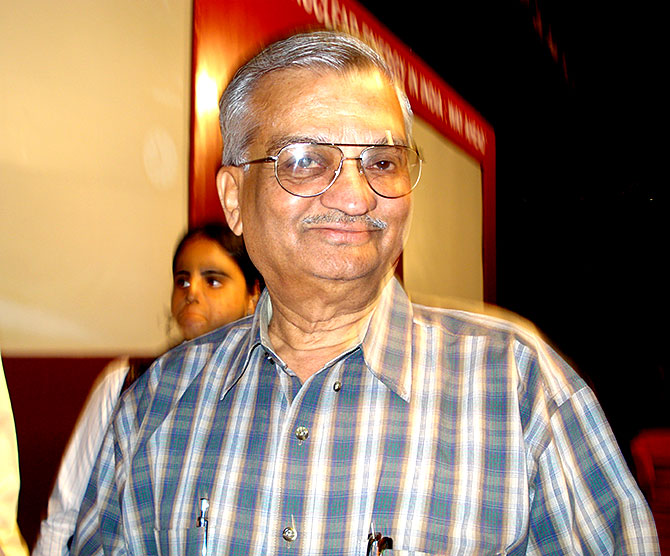
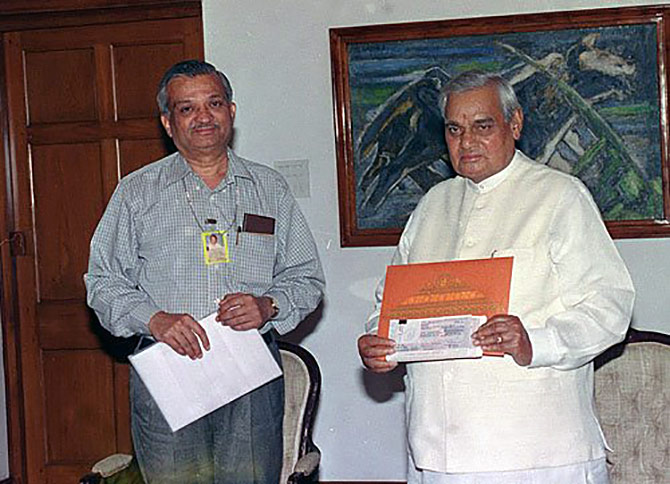
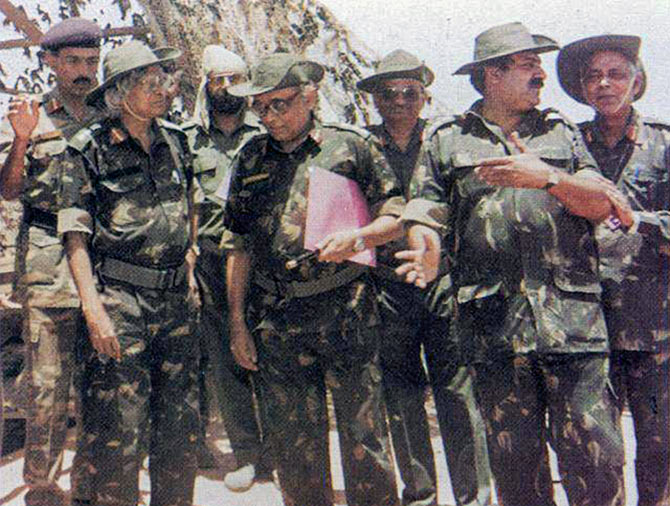
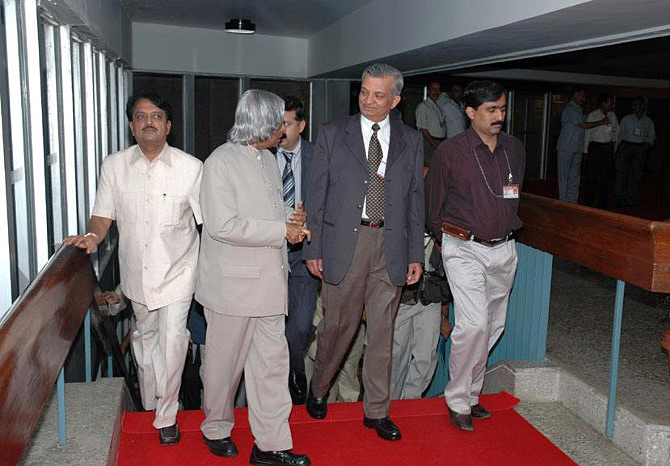

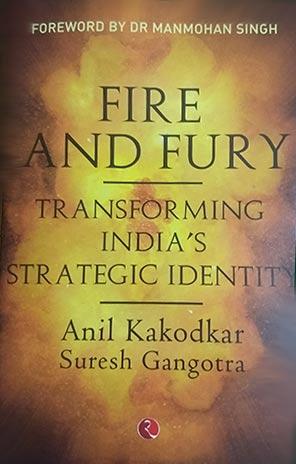
Saturday, November 30, 2019
Book Review: Bridgital Nation
Book Review:
Bridgital Nation By N Chandrasekharan & Roopa
Purushothaman, Penguin Random House 2019
(Appeared in Outlook Magazine.
Towards
a Tata-Birla Plan 2.0
Seventy five years ago on Jan 17, 1944 and on Dec 17, 1944
two slim volumes with far reaching consequences for India were published. They
were titled A Brief memorandum outlining a plan for economic development
of India Part I and A Brief memorandum outlining a plan for
economic development of India, Distribution-Role of the State Part II. The
first was authored by Sir Purushottamdas Thakurdas, J R D Tata, G D Birla, Sir
Ardeshir Dalal, Sir Shri Ram, Kasturbhai Lalbhai, A D Shroff and John Mathai
and the second was authored by the same group except for Sir Ardeshir Dalal,
since in the interim he had been inducted into the Viceroy’s executive council
in charge of planning.
The plan by India’s leading businessmen also came to be
known as “Bombay Plan” perhaps because it was discussed, drafted and finalized
in Bombay, as a matter of fact in “Bombay House”, the headquarters of Tata
Group. It won’t be an exaggeration to say that Bombay Plan which was also
called Tata-Birla plan by the media, guided the course of post war and post-colonial
economy of India from 1947 to 1991.
There is no better testimonial to the impact of Tata-Birla
plan than the words of former Prime Minister, Dr Man Mohan Singh, who said
addressing the ASSOCHAM on August 24, 2004 “As a student of economics in the
1950s and later as a practitioner in government, I was greatly impressed by the
"Bombay Plan" of 1944. When we read it today, nearly 60 years later,
we see how relevant many of the central propositions of the Bombay Plan remain.
In those days, it was an unprecedented document. It is worthy of emphasis that nowhere
in the developing world had a group of businessmen come together to draw up
such a long-term plan for a country. The Bombay Plan laid great emphasis on
public investment in social and economic infrastructure, in both rural and
urban areas, it emphasized the importance of agrarian reform and agricultural
research, in setting up educational institutions and a modern financial system.
Above all, it defined the framework for India's transition from agrarian
feudalism to industrial capitalism, but capitalism that is humane, that invests
in the welfare and skills of the working people. In many ways, it
encapsulated what all subsequent Plans have tried to achieve.”
Now everyone is familiar with the big bang reset in India’s
economy from consolidation and protected growth to globalization of markets and
capital that started in 1991. The stirrings for reset had started a decade
earlier. It’s however striking that unlike the captains of industry who
articulated the Bombay Plan, the business leaders of the 90’s and even the
first decade of 21st century failed to articulate their vision for India
in the midst of challenges and opportunities of globalization. Perhaps they
were too busy improving efficiencies, expanding capacities and acquiring assets
abroad. In fact the only document which comes close to a vision document for
that period did not come from business leaders but by an economist who had
served the Indian state in various capacities for decades; Dr Manmohan Singh’s
budget speech of 1991. And that was it.
‘Bridgital Nation’ by N Chandrasekharan who is currently
Chairman of Tata Sons and Roopa Purushothaman, Chief Economist at Tata Group,
is an attempt to provide a vision to guide India in the coming decades of what
they call as the Fourth Industrial Revolution propelled by Artificial
Intelligence and other technological developments. It is slim, about 260 pages
plus notes, well annotated and at the same time captivatingly written there by
making it reader friendly despite the gravitas of the problems they deal with.
They skillfully sketch with colour and brevity the
complexities in the real world of health care; education and skilling; unemployment
and under employment; formal and informal economies; problems faced by women in
the work force; entrepreneurship etc. The authors draw stories, data, lessons from
their own rich experience in services as well as the institutional reach and
memory of Tata Group that encompasses nearly a hundred enterprises that cover
many sectors of the formal economy.
On top of that they have access to over a century of
experience in the vast philanthropy of Tata Trusts and of individual Tata group
companies among literally all sections of society in all corners of India. Among
adivasis; rural communities; remote hill regions, in the heart land and
periphery of the subcontinent; in the areas of education; adult literacy;
health care; self-help groups etc etc. From there they draw rich human interest
stories which act as parables for their theses.
They are able to weave the stories in the grey matter of
ideas, data and graphics. That’s a remarkable achievement stylistically.
At the outset they explain the new word they have coined,
“bridgital”: “we need a new approach that views AI and automation as a human
aid, not a replacement for human intervention. If we do this, automation in
India will look nothing like it does anywhere else. We call this approach
‘Bridgital’.”
There is a visible split in the nature of the Indian
economy—a high-skill, high-productivity sector that produces goods and services
for wealthy, tech-savvy, and urban consumers alongside external markets, and a
low-cost, low-productivity sector that is mostly geared towards the poor. India
is missing a ‘middle’—the midway jobs, the mid-skilled workers.
India’s approach to automation has to be distinct from China,
the US and Japan; it has to focus on technologies that augment and raise
people’s skills.
India does not resemble the traditional story analysts tell
about economic progress. Economic growth does not reflect job growth. While
India is abundant in unskilled and inexpensive labour, GDP growth has instead
been powered by industries that prize skill and capital—scarce resources
unavailable to a vast swathe of the country.
India’s challenges are urgent. It is easy to be trapped in
crisis mode, fighting fires as they spring up. To evolve, though, the country
has to anticipate and actively design the future it wants.
The changes that took place in the early 90’s seem to have
run their course in three decades since, just as the Bombay Plan (1944) had run
its course by the 1980’s. In order to face the challenges of today’s
geo-politics, geo-economics and the explosion in technology, there is a need
for the articulation of another vision document with practical policy
guidelines drafted by India’s best economic, scientific, technological brains
along with business leaders in Manufacturing, Trade, Agriculture, Finance,
Capital Markets and Services.
In the absence of such a vision, we have today in the
corridors of power, an atmosphere of bluster and hubris on the one hand and
groping around in the dark on the other. It can at best be described as a
tactical approach to the challenges rather than strategic.
N Chandrasekharan and Rooopa Purushothaman have ventured to
contribute towards such a new Tata-Birla plan through their book “Bridgital
Nation”. Hopefully it will attract other business and thought leaders to put
aside some time and put in intense effort to articulate a new vision a Tata-
Birla Plan 2.0.
Shivanand Kanavi
(Former VP at
TCS and currently Adjunct Faculty at NIAS, Bengaluru and author of “Sand to
Silicon: The amazing story of digital technology” and “Research by
Design: Innovation and TCS”; skanavi@gmail.com)
Friday, August 30, 2019
65 years of Computer Science in India
65 years of Computer Science in India
August 29, 2019

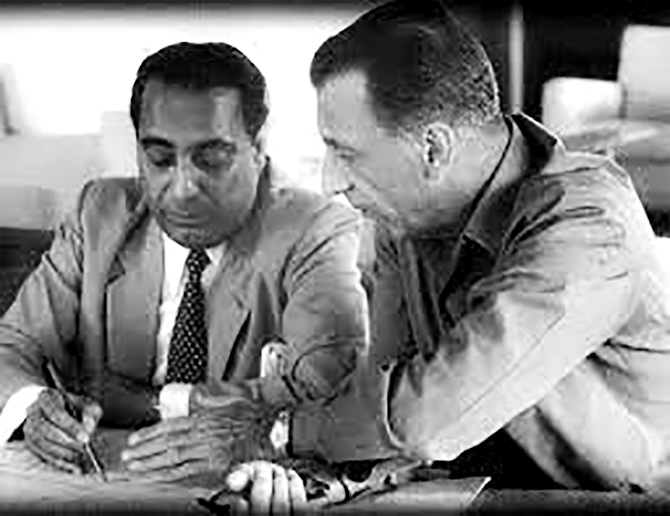

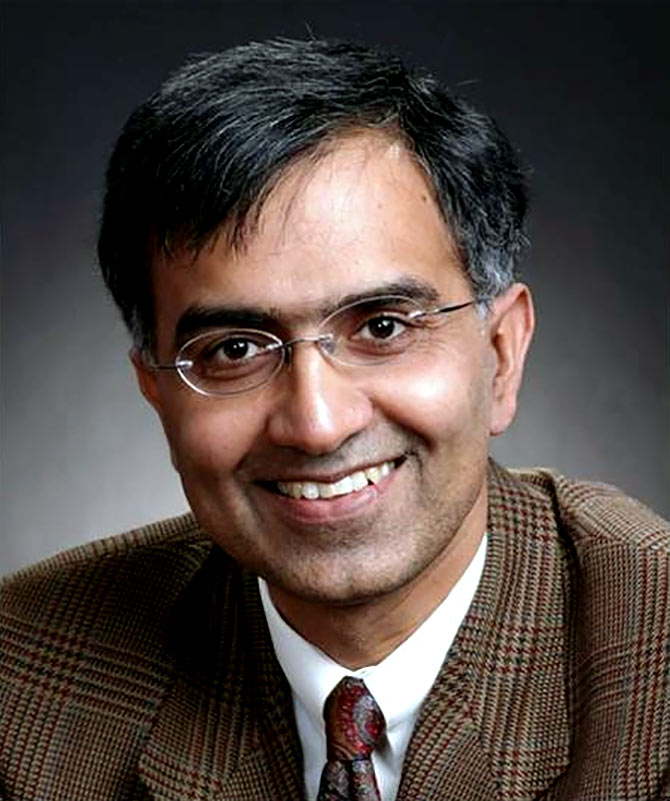
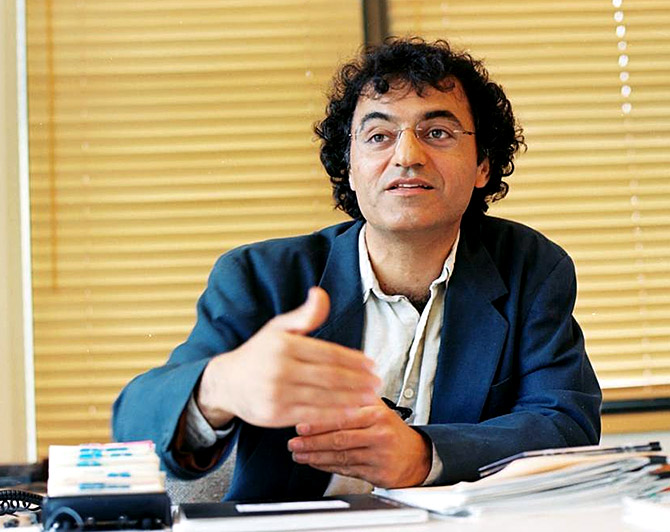
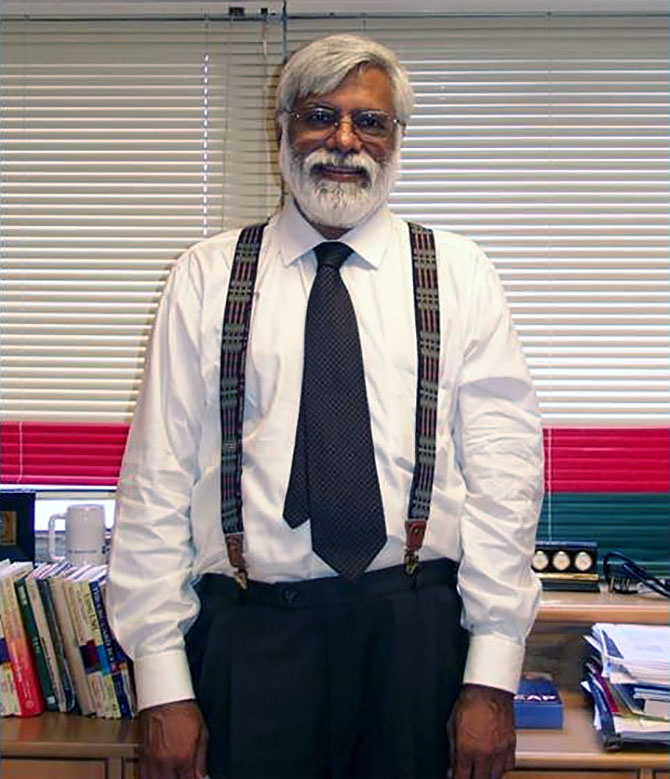
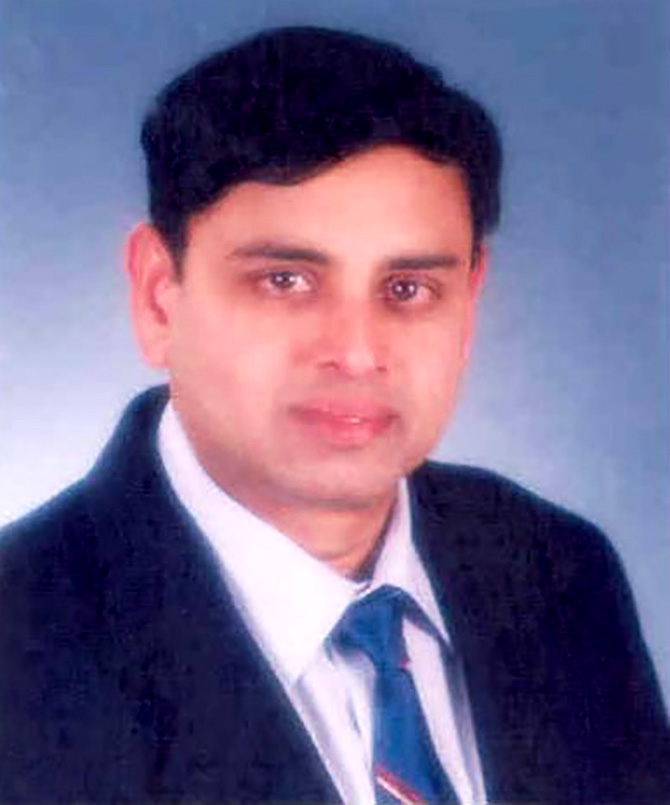


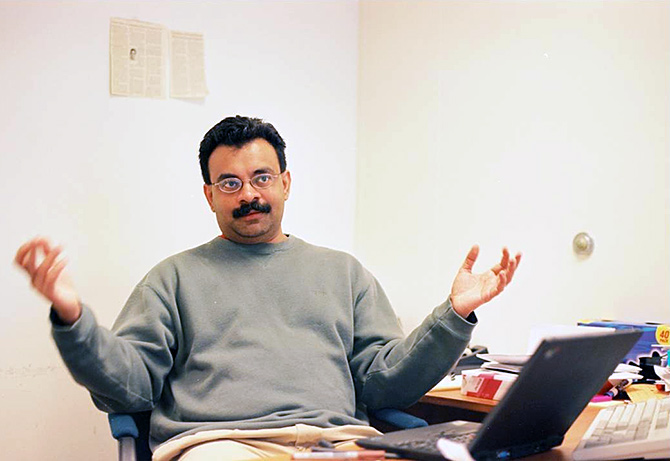
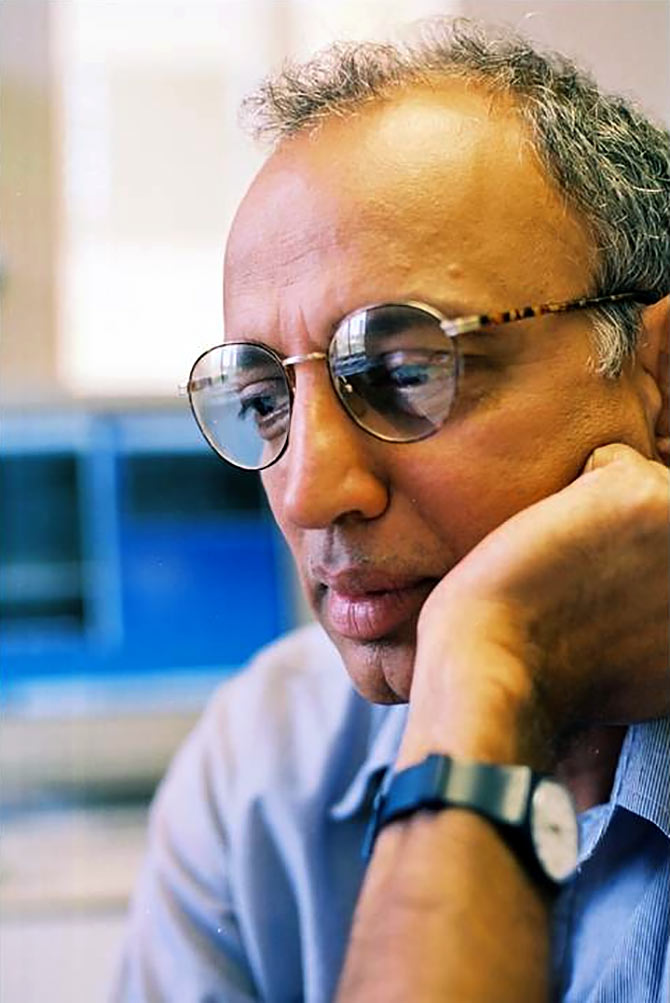
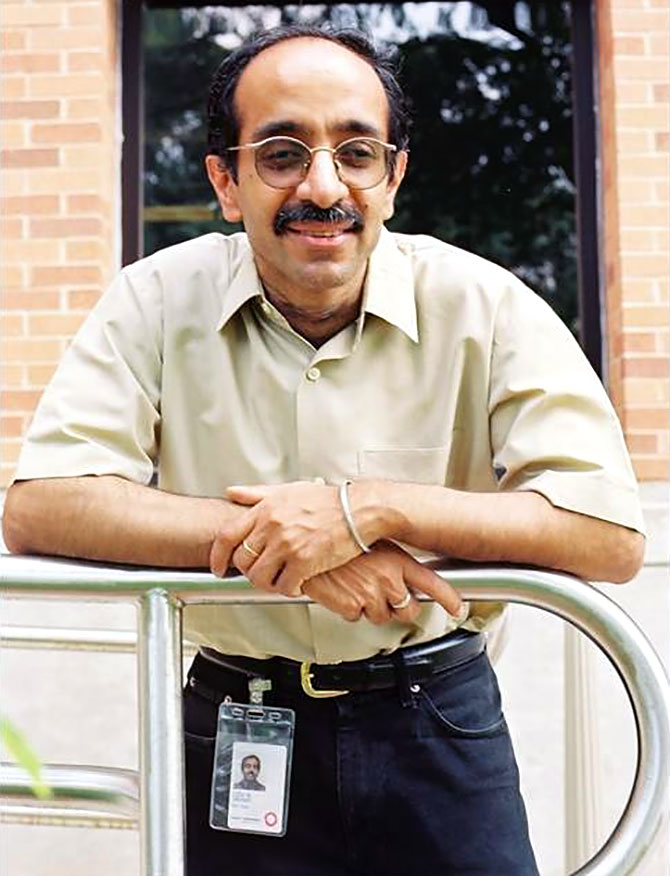
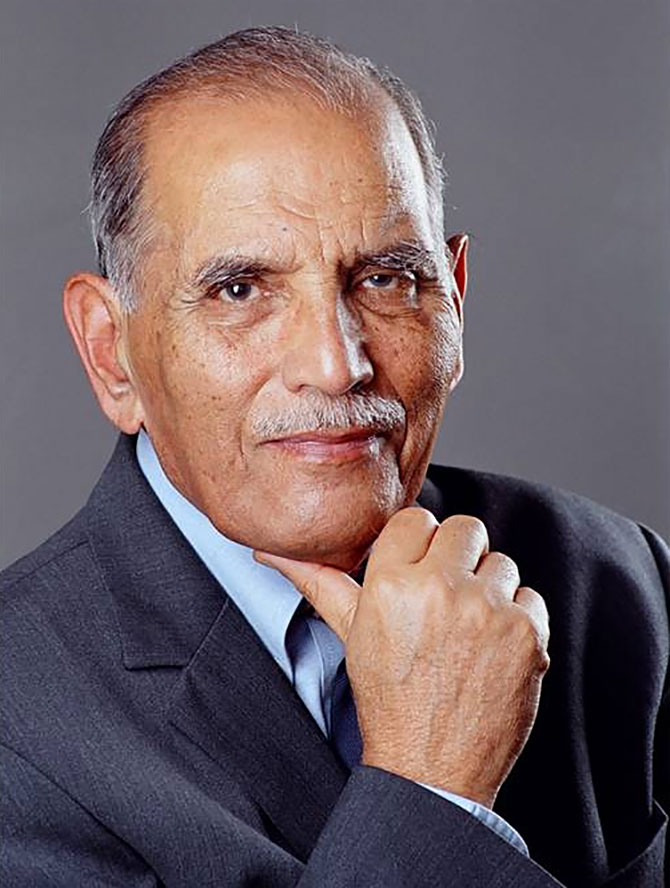
Sunday, January 20, 2019
Interview Prof S Settar on art and artisans of Ancient India

ಪ್ರಾ. ಶೆಟ್ಟರ : ಆಗಿದೆ. ನನ್ನ ಬರವಣಿಗೆಯಲ್ಲಿಯೇ ಸ್ವಲ್ಪ ಬಂದಿದೆ. ಲಿಪಿಕಾರರ ಬಗ್ಗೆ ನಾನು ಇತ್ತೀಚೆಗಷ್ಟೇ ಬರೆದಿದ್ದೇನೆ. ಹಿಂದೆ ಪ್ರಾಚೀನ ಶಿಲ್ಪಿಗಳ ಬಗ್ಗೆ ಬರೆದಿರುವೆ. ಬಹುಷಃ ನಮ್ಮ ದೇಶದೊಳಗೆ ಪ್ರಾಚೀನ ಶಿಲ್ಪಿಗಳ ಬಗ್ಗೆ ಕೆಲಸ ಮಾಡಿರುವ ಇಬ್ಬರು ಅಂದರೆ, ನಾನು ಮತ್ತು ಎಸ್. ಸಿ. ಮಿಶ್ರಾ. ಅವರು ಮಧ್ಯಪ್ರದೇಶದ ಶಿಲ್ಪಿಗಳ ಕುರಿತಾಗಿ ಬರಿದಿದ್ದಾರೆ. ವಿಸ್ತೃತವಾಗಿ ಪ್ರಾಚೀನ ಶಿಲ್ಪಿಗಳ ಬಗ್ಗೆ ಬರಿದಿರೋದು ನಮ್ಮ ದೇಶದಲ್ಲಿ ಬಹುಷಃ ನಾನೊಬ್ಬನೇ ಎಂದು ಕಾಣುತ್ತೆ. ನನಗೆ ಅದರ ಬಗ್ಗೆ ಒಂದು ತರಹದ ಹುಚ್ಚು ಇತ್ತು. ಇದುವರೆಗೆ ಶಿಲ್ಪಿಗಳನ್ನ ಹೊರಗಿಟ್ಟು, ಬರೀ ಕಲೆ, ಶೈಲಿ, ಶಿಲ್ಪಶಾಸ್ತ್ರದ ಬಗ್ಗೆ ಬರೆದುಕೊಂಡಿದ್ದೀವಿ ಅಂತ ನನಗೆ ಅನಿಸುತ್ತಿತ್ತು. ನಾನು ಇಂಡೀಯನ್ ಹಿಸ್ಟರಿ ಕಾಂಗ್ರೆಸ್ಸಿನ ಅಧ್ಯಕ್ಷನಾದಾಗ ಕೂಡ ಪ್ರಾರಂಭ ಕಾಲದ ಶಿಲ್ಪಿಗಳ ಬಗ್ಗೆನೆ ನನ್ನ ಅಧ್ಯಕ್ಷ ಭಾಷಣದ ಉದ್ದಕ್ಕೂ ಬಂದಿದೆ.
ಇತ್ತೀಚೆಗೆ ಸ್ವಲ್ಪ ಜನ ಶಿಲ್ಪಿಗಳ ಬಗ್ಗೆ ಆಸಕ್ತರಾಗಿದಾರೆ. ಇನ್ನೊಂದು ವಿಷಯ ಅಂದ್ರೆ, ಶಿಲ್ಪಿಗಳ ಬಗ್ಗೆ ಆಕರಗಳೇನಿವೆಯಲ್ಲ, ಅವು ಕರ್ನಾಟಕದಲ್ಲಿ ಸಿಕ್ಕಿರುವಷ್ಟು ಬೇರೆಲ್ಲಿಯೂ ಸಿಗುವುದಿಲ್ಲ. ಬಾದಾಮಿಯ ಚಾಳುಕ್ಯರ ಕಾಲದಿಂದಲೂ ಇದನ್ನು ನಾವು ಹೇಳಬಹುದು. ನನ್ನ ಇತ್ತೀಚಿನ ಹಳಗನ್ನಡದ ಬಗೆಗಿನ ಪುಸ್ತಕದಲ್ಲಿ ಇದರ ಉಲ್ಲೇಖ ಇದ್ದೇ ಇದೆ. ಶಿಲ್ಪಿಗಳ ಅಧ್ಯಯನವಷ್ಟೇ ಅಲ್ಲದೆ, ಅವರ ಹಸ್ತಾಕ್ಷರ ಮೊದಲು ಮಾಡಿ ಸಂಗ್ರಹಿಸಿ ಅಧ್ಯಯನ ಮಾಡಿದ್ದೇನೆ. ಹೀಗೆ ಯಾರೂ ಮಾಡಿಲ್ಲ ಎಂಬುದು ನನ್ನ ಅಂದಾಜು. ಹೊಯ್ಸಳರ ಕುರಿತಾದ ಪುಸ್ತಕವೊಂದರಲ್ಲಿಯೇ ಶಿಲ್ಪಿಗಳ ಬಗ್ಗೆ ಮೂರು ಅಧ್ಯಾಯಗಳಿವೆ. ಯಾವ ಯಾವ ರೀತಿಯ ಶಿಲ್ಪಿಗಳಿದ್ದರು, ಹೇಗಿದ್ದರು, ಹೇಗೆ ಬದುಕಿದ್ರು, ಯಾವ ರೀತಿ ಕೆಲ್ಸ ಮಾಡ್ತಾ ಇದ್ರು ಎಂಬುದರ ಬಗ್ಗೆ ಆ ಲೇಖನಗಳು ಬೆಳಕು ಚೆಲ್ಲುತ್ತವೆ. ಇದೆಲ್ಲಕ್ಕಿಂತ ಹೆಚ್ಚಾಗಿ, ಅವರು ಕೈಗೊಳ್ಳುತ್ತಿದ್ದಂತ ವೃತ್ತಿಯಾತ್ರೆಗಳು. ಎಲ್ಲೆಲ್ಲಿಗೆ ಪ್ರಯಾಣ ಬೆಳೆಸ್ತಿದ್ರು, ಎಷ್ಟು ದೂರದ ತನಕ ಹೋಗ್ತಾ ಇದ್ರು ಇತ್ಯಾದಿ.
ನನ್ನ ಅಧ್ಯಕ್ಷ ಭಾಷಣದ ಶೀರ್ಷಿಕೆ ಕೂಡ “ದಿ ಫೂಟ್ ಪ್ರಿಂಟ್ಸ್ ಆಫ್ ದಿ ಅರ್ಟಿಸನ್ಸ್ ಆಫ್ ಇಂಡಿಯ” ("ಭಾರತೀಯ ಕುಶಲಕರ್ಮಿಗಳ ಹೆಜ್ಜೆ ಗುರುತುಗಳು"). ಅಶೋಕ ಚಕ್ರವರ್ತಿಯ ಕಾಲದಿಂದ ಹಿಡಿದು ಕುಶಾಣರವರೆಗಿನ ಕುಶಲಕರ್ಮಿಗಳ ಇತಿಹಾಸದ ಮೇಲೆ ಆ ಭಾಷಣ ಬೆಳಕು ಚೆಲ್ಲುವುದು. ಅದರಲ್ಲಿ ಕರ್ನಾಟಕದ ಬಗ್ಗೆ ಅಷ್ಟಾಗಿ ಪ್ರಸ್ತಾಪವಿಲ್ಲ. ಆದರೆ ಯಾವದೇ ಶೈಲಿಯ ಶಿಲ್ಪವಾದರೂ ನನ್ನ ಎಲ್ಲಾ ಬರವಣಿಗೆಗಳಲ್ಲಿ ಶಿಲ್ಪಿಗಳ ಬಗ್ಗೆ ಬರೆದಿದ್ದೇನೆ.
ಕಣವಿ: ಆಗ ಶಿಲ್ಪಕಲಾ ಶಾಲೆಗಳು ಇದ್ದವೇ?
ಶೆಟ್ಟರ: ಶಿಲ್ಪಕಲಾ ಶಾಲೆಗಳು ಇದ್ದವೇ ಎಂದು ನಾವು ಎಲ್ಲಾ ಕಡೆಗೂ ಕೇಳ್ತೀವಿ. ಆ ಕಾನ್ಸೆಪ್ಟ್ ಇತ್ತು ಅಂತ ಹೇಳಲಿಕ್ಕಾಗುವುದಿಲ್ಲ. ಇದು ಒಂದು ರೀತಿಯಲ್ಲಿ ತಂದೆಯಿಂದ ಮಗನಿಗೆ, ಅವನಿಂದ ಮತ್ತವನ ಮಗನಿಗೆ ಪಾರಂಪರಿಕವಾಗಿ ಮುಂದುವರೆಸಿಕೊಂಡು ಹೋಗ್ತಾ ಇದ್ದಂತಹ ಕಲೆ. ಮೂಲ ವಾಸ್ತು ಮತ್ತು ಶಿಲ್ಪಕಲಾ ಗ್ರಂಥಗಳನ್ನು ಆಳವಾಗಿ ಅಧ್ಯಯನ ಮಾಡುವಷ್ಟು ಅವರು ಅಕ್ಷರಸ್ಥರಾಗಿರಲಿಲ್ಲ ಎಂದು ನನಗನಿಸುತ್ತದೆ. ಆದರೆ ಕುಶಲಕರ್ಮಿಗಳು ಶಾಸ್ತ್ರ ಗ್ರಂಥವಲ್ಲದಿದ್ದರೂ ಕೆಲ ಕೈಪಿಡಿ ತಂತ್ರಗಳು ಉಪಯೋಗಿಸುತ್ತಿದ್ದರು. ಕುಶಲತೆಗಳು ಇದ್ದಿದಬಹುದೆನೋ, ಅದನ್ನೇ ತಂದೆ ಮಗನಿಗೆ ಬಳುವಳಿಯಾಗಿ ಕೊಟ್ಟಿರಬಹುದು ಎಂಬು ಊಹಿಸಬಹುದು. ಅದು ಕೇವಲ ಒಂದು ಕುಟುಂಬಕ್ಕೆ ಮಾತ್ರ ಸೀಮಿತವಾಗಿದ್ದ ಕೌಶಲ್ಯ ಎಂದು ಹೇಳಲಿಕ್ಕೆ ಆಗುವುದಿಲ್ಲ. ಅದು ಒಂದು ಪಂಗಡಕ್ಕೆ, ಸಮಾಜದ ಒಂದು ವರ್ಗಕ್ಕೆ ಸೇರಿದ್ದಾಗಿತ್ತು. ಇನ್ನೊಂದೆಂದರೆ ಆಗ ಮತ್ತು ಈಗಲೂ ಕೂಡ ಈ ತರಹದ ಕಲೆಗಳು, ಸಂಗೀತ ಇತ್ಯಾದಿ ಪಾಠ, ಗ್ರಂಥಗಳಿಂದಲ್ಲ ಆದರೆ ಒಬ್ಬ ಗುರು ಹಿರಿಯರ ಮಾರ್ಗದರ್ಶನದಲ್ಲಿ ಅಭ್ಯಾಸ, ಸಾಧನೆಗಳಿಂದಲೇ ಎಲ್ಲರೂ ಕಲಿಯುತ್ತಾರೆ. ಪಠ್ಯಗಳೂ ಇರಬಹುದು, ಆದರೆ ಪ್ರತ್ಯಕ್ಷ ಮಾಡುವ ಮೂಲಕವೇ ಕಲಿಯುವ ವಿದ್ಯೆ ಇದು.
ಕಣವಿ: ಶಾಸ್ತ್ರಗಳೂ ಇದ್ದವೇ?
ಶೆಟ್ಟರ: ಇದ್ದವು. ನಾನು ಐ ಜಿ ಎನ್ ಸಿ ಎ (Indira Gandhi National Centre for the Arts) ಚೇರ್ಮನ್ ಆಗಿದ್ದಾಗ ಒಂದು ಕಾರ್ಯಾಗಾರ ಮಾಡಿದ್ವಿ. ಅದರ ಮುಖ್ಯ ಉದ್ದೇಶ ಏನಂತಂದ್ರೆ, ಕಾಶ್ಯಪ ಶಿಲ್ಪ ಪಠ್ಯವನ್ನ ಇಟ್ಟುಕೊಂಡು, ಹಿಂದೆ ಅವರು ಬಳಸಿದ್ದಂತಹ ಕಲ್ಲನ್ನೇ ನಾವೂ ಉಪಯೋಗಿಸಿಕೊಂಡು, ಸಾಂಪ್ರದಾಯಿಕವಾಗಿ ಆ ಕಲೆಯನ್ನ ಬಲ್ಲ ಶಿಲ್ಪಿಗಳನ್ನೇ ಕರ್ಕೊಂಡು ಬಂದು, ನನಗೆ ಏನು ಗೊತ್ತಿರುವ ಶೈಲಿ, ವಿನ್ಯಾಸಗಳನ್ನು ನಾನು ಹೇಳಿಕೊಟ್ಟು, ಅವರು ತಮ್ಮ ಉಪಕರಣ, ಪ್ಲಂಬ ಲೈನ್ಸ್, ತಾಳಮಾಳ ಇವನ್ನೆಲ್ಲ ಇಟ್ಟುಕೊಂಡು, ಶಿಲ್ಪಗಳನ್ನು ಕಟೆಯುವದು. ಈ ತರಹದ ಮೂರು ಕಾರ್ಯಾಗಾರಗಳನ್ನು ನಾವು ಹಮ್ಮಿಕೊಂಡಿದ್ವಿ. ಸಾಂಪ್ರದಾಯಿಕ ಶಿಲ್ಪಗಾರಿಕೆ ಗೊತ್ತಿದ್ದವರನ್ನೇ ಆ ಕೆಲಸದಲ್ಲಿ ಇನ್ವಾಲ್ವ್ ಮಾಡಿಕೊಂಡು ಏರ್ಪಡಿಸಿದ್ವಿ. ಅವರು ಯಾರೂ ವಿದ್ಯಾವಂತರಾಗಿರಲಿಲ್ಲ. ಆದರೆ ಅದ್ಭುತ ಕಲಾವಿದರಾಗಿದ್ರು. ಆಗ ನಾವು ೨೪ ಶಿವನ ಮೂರ್ತಿಗಳನ್ನು ಕೆತ್ತಿಸಿದೆವು. ಅಲ್ಲಿ ಈಗಲೂ ಇರಿಸಿದ್ದೀವಿ. ಚಾಳುಕ್ಯರ, ಹೊಯ್ಸಳರ ಕಾಲದ ಶಿಲ್ಪಿಗಳ ಕೆತ್ತನೆ ಕೆಲಸಕ್ಕಿಂತ ತುಂಬಾ ಉತ್ತಮವಾದ ಕರಕುಶಲತೆಯನ್ನ ಇಲ್ಲಿ, ಕೆಂಗುಂಟೆ ರಸ್ತೆಯಲ್ಲಿರುವ ಕಲಾಗ್ರಾಮದ ಕ್ಯಾಂಪಸಿನಲ್ಲಿ ಅವನ್ನ ಗಮನಿಸಬಹುದು. ಅಲ್ಲಿಯೇ ಒಂದು ಗ್ಯಾಲರಿಯನ್ನೂ ಕೂಡ ಮಾಡಲಾಗಿದೆ. ಸುಮಾರು ಮೂರರಿಂದ ಐದಡಿ ಎತ್ತರದ ಪ್ರತಿಯೊಂದು ಶಿಲ್ಪ. ಈ ಶಿಲ್ಪಿಗಳಿಗೆ ಈ ಕೆಲ್ಸ ನಿರ್ದೇಶಿಸಿದಾಗ, ಅವರು ದಿನಾಲೂ ಸುಮಾರು ಐದೂವರೆಗೆ ಎದ್ದು, ತಮ್ಮ ಎಂದಿನ ಸಂಪ್ರದಾಯಗಳನ್ನು ಪಾಲಿಸಿಯೇ ಶಿಲ್ಪಗಾರಿಕೆಯನ್ನ ಪ್ರಾರಂಭಿಸುತ್ತಿದ್ದರು. ಅದಕ್ಕೆ ಸಂಬಂಧಿಸಿದ ಚಿತ್ರಗಳು, ವೀಡಿಯೋ ಎಲ್ಲವನ್ನೂ ಸಂಗ್ರಹಿಸಿದ್ದೆವೆ. ಅವು ಅಲ್ಲಿಯೇ ಇವೆ. ನನ್ನ ಉದ್ದೇಶ ಶಿಲ್ಪಕಲೆಯನ್ನ ರಿಕ್ರಿಯೇಟ್ ಮಾಡುವ ಸಾಧ್ಯತೆಯನ್ನು ತೋರಿಸುವುದಾಗಿತ್ತು. ಅವರು ಮೂಲದಿಂದಲೇ ತುಂಬ ಕುಶಲಕಲಾಕರ್ಮಿಗಳಾಗಿದ್ದರು. ಅವರು ಹೆಚ್ಚು ವಿದ್ಯಾವಂತರಲ್ಲದ ಕಾರಣಕ್ಕೆ ಅವರಿಗೆ ಈ ಸಾಂಪ್ರದಾಯಿಕ ವಾಸ್ತು ಪಠ್ಯವನ್ನ ಶಿಲೆಗೆ ಅಳವಡಿಸಿಕೊಂಡು ಕೆಲಸ ಮಾಡುವ ತಂತ್ರಗಾರಿಕೆ ಇರಲಿಲ್ಲ ಅಷ್ಟೇ. ಮತ್ತು ಒಮ್ಮೊಮ್ಮೆ ಅವರು ಎಲ್ಲ ಶೈಲಿಗಳನ್ನೂ ಮಿಕ್ಸ್ ಮಾಡಿಬಿಡ್ತಾ ಇದ್ರು. ಅವರ ದೃಷ್ಟಿಯೊಳಗ ಅದೆ ಉತ್ತಮ. ಆದರೆ ಚಾಳುಕ್ಯರ ಕಾಲದ ಶಿಲ್ಪಗಾರಿಕೆ ಬೇರೆ. ಚೋಳರ ಶೈಲಿಯೇ ಬೇರೆ. ಅವರಿಗೆ ಅದು ಗೊತ್ತಾಗ್ತಿರಲಿಲ್ಲ. ಅವರು ಕೆಲಸ ಮಾಡುತ್ತಾ, ಹೊಯ್ಸಳರದ್ದು ಮತ್ತು ಚೋಳರದ್ದು ಎರಡನ್ನೂ ಸೇರಿಸಿಬಿಡ್ತಾ ಇದ್ರು.
ಈಗ ಇತಿಹಾಸವನ್ನ ಗಮನಿಸಿ ಹೇಳೋದಾದರೆ, ಹೊಯ್ಸಳರ ನಂತರ ವಿಜಯನಗರ ಅರಸರ ಆಳ್ವಿಕೆ ಪ್ರಾರಂಭವಾದಾಗ ದಕ್ಷಿಣ ಭಾರತೀಯ ಶೈಲಿಯೇ ಪ್ರಾರಂಭವಾಯಿತು. ಗ್ರಾನೈಟಿನಲ್ಲಿ ಕೆತ್ತನೆ ಮಾಡ್ತಾ ಇದ್ದ ಚೋಳ ಶೈಲಿಯ ಶಿಲ್ಪಿಗಳು ಅವರದ್ದೇ ಒಂದು ವಿಶಿಷ್ಟ ಶೈಲಿಯನ್ನ ಹುಟ್ಟುಹಾಕಿದ್ರು. ನಮ್ಮಲ್ಲಿ ಆರಂಭದ ಚಾಳುಕ್ಯರು ಕೇವಲ ಮರಳುಗಲ್ಲನ್ನು (ಸ್ಯಾಂಡ್ ಸ್ಟೋನ್) ಮಾತ್ರ ಬಳಸ್ತಾ ಇದ್ರು. ಅವರು ಬೇರೆ ಯಾವುದನ್ನೂ ಉಪಯೋಗಿಸ್ತಿರಲಿಲ್ಲ. ಚಾಳುಕ್ಯರು ಮತ್ತು ಹೊಯ್ಸಳರು ಬರೀ ನುಣುಪುಗಲ್ಲನ್ನು (ಸಾಫ್ಟ್ ಸ್ಟೋನ್) ಮಾತ್ರ ಬಳಸುತ್ತಿದ್ದರು. ಹೊಯ್ಸಳರ ನಂತರ ಗ್ರಾನೈಟ್ ಪ್ರಮುಖ ಮಾಧ್ಯಮವಾಗಿ ಉಪಯೋಗಿಸಲ್ಪಟ್ಟಿತು.
ಕಣವಿ: ಈ ತಂಜಾವೂರಿನ ಬೃಹದೇಶ್ವರ ಟೆಂಪಲ್ ಇದೆಯಲ್ಲ ಅದು ಗ್ರ್ಯಾನೈಟು ಅಲ್ಲವೇ?
ಶೆಟ್ಟರ: ತಮಿಳುನಾಡಿನಲ್ಲಿ ಏನೇನು ಶಿಲ್ಪಗಾರಿಕೆ ಇದೆಯೋ ಅದೆಲ್ಲವೂ ಗ್ರಾನೈಟ್ ನಿಂದ ಮಾಡಲ್ಪಟ್ಟಿರುವುದು. ವಿಜಯನಗರ ಅರಸರ ಆಳ್ವಿಕೆಯಲ್ಲಿ ಅದು ಒಂದು ರೀತಿಯಿಂದ ಸಾರ್ವತ್ರಿಕವಾಯಿತು. ಅಂದರೆ ದಕ್ಷಿಣ ಭಾರತದ ಶಿಲ್ಪಗಾರಿಕೆ ಕುಟುಂಬಗಳು ಪೂರ್ತಿ ಅವರ ಮಾದರಿಯನ್ನೇ ಅನುಸರಿಸಿದರು. ಅದಕ್ಕೂ ಮೊದಲು ಇದು ಪಾಂಡ್ಯರದ್ದು, ಇದು ಚೋಳರದ್ದು, ಅಂತ ಪ್ರತ್ಯೇಕಿಸಿ ಹೇಳಬಹುದಾಗಿತ್ತು. ಅವರು ಬಳಸುತ್ತಿದ್ದ ತಂತ್ರಗಾರಿಕೆ, ಉಪಕರಣಗಳು ಇವೆಲ್ಲಕ್ಕೂ ಇದು ಅನ್ವಯವಾಗುತ್ತದೆ. ಹೆಚ್ಚಿನ ಶಿಲ್ಪಿಗಳು ಒಂದು ಕೈಪಿಡಿಯನ್ನು ಆಧಾರವಾಗಿಟ್ಟುಕೊಂಡು, ತಮ್ಮ ತಂದೆಯ ಅಥವಾ ಪಂಗಡದ ಮುಖ್ಯಸ್ಥನ ನಿರ್ದೇಶನದಲ್ಲಿ, ಮಾರ್ಗದರ್ಶನದಲ್ಲಿ ಶಿಲ್ಪಕಲೆಯನ್ನು ಕಲಿತರು ಎಂದು ಹೇಳಬಹುದು.
ಕಣವಿ: ಅವರಿಗೆ ಅಕ್ಷರ ಜ್ಞಾನ ಇತ್ತಾ?
ಶೆಟ್ಟರ: ಅಕ್ಷರಾಭ್ಯಾಸ ಮಾಡಿರಲಿಲ್ಲ ಅಂದರೆ. ಅವರಲ್ಲಿ ಕೆಲವು ಶಿಲ್ಪಿಗಳಿಗೆ ತಮ್ಮ ಹೆಸರನ್ನು ಬರೆದುಕೊಳ್ಳುವಷ್ಟು ಅಕ್ಷರಜ್ಞಾನ ಇತ್ತು ಇನ್ನುಳಿದವರಿಗೆ ತಮ್ಮ ಹೆಸರನ್ನು ಬರೆದುಕೊಳ್ಳುವಷ್ಟು ಕೂಡಾ ಸರಿಯಾದ ಅಕ್ಷರಜ್ಞಾನ ಇರಲಿಲ್ಲ ತಪ್ಪು ಮಾಡತಿದ್ದರು.
ಕಣವಿ: ಹಂಗಂದ್ರ ಈ ಕಿರಾತಾರ್ಜುನ ಮುಂತಾದ ಪೌರಾಣಿಕ ಸನ್ನಿವೇಶಗಳನ್ನ ಅವರು ಹೆಂಗ ಸಾಕ್ಷಾತ್ಕರಿಸುತ್ತಿದ್ದರು ?
ಶೆಟ್ಟರ: ಓದಾಕ ಬರಿಯಾಕ ಬರ್ತಿರಲಿಲ್ಲ ಅಂದ್ರೂನೂ, ಕತೆಗಳ ಮೂಲಕ ಅಂತ ಹೇಳಬಹುದು. ಕಥಾಸಮಯ ಅನ್ನುವುದು ಎಲ್ಲ ಕಾಲದಲ್ಲೂ ಸಾಮಾನ್ಯವಾಗಿ ಕಾಣುವಂಥದ್ದೇ. ಆ ಶಿಲ್ಪಗಳು ಪಠ್ಯಗಳಿಂದಲೇ ಆವಿರ್ಭವಿಸಿದವು ಅಂತಲ್ಲ. ಕಲ್ಲಿನಲ್ಲಿ ಕಥೆಗಳು ಅಂತ ಏನು ಹೇಳ್ತೀವಿ ಅವು ಎರಡು ವಿಧ. ತನ್ನ ಕೌಶಲ್ಯವನ್ನ ಅಭಿವ್ಯಕ್ತಗೊಳಿಸುವದಕ್ಕೆ ನರೆಟಿವ್ ಅನ್ನುವುದನ್ನು ಆತ ಬಳಸಿಕೊಳ್ಳುತ್ತಿದ್ದ. ಒಮ್ಮೊಮ್ಮೆ ಕಥೆ ಒಂದು ಪೂರ್ತಿ ಪ್ಯಾನೆಲ್ ನಲ್ಲಿ ಇರ್ತದೆ. ಆದರೆ ಕೆಲವೊಮ್ಮೆ ಒಂದೇ ಚೌಕಟ್ಟಿನೊಳಗೆ ಸ್ಥಗಿತವಾಗಿರ್ತದೆ. ಉದಾಹರಣೆಗೆ ರಾವಣ ಕೈಲಾಸವನ್ನ ಎತ್ತಿದ್ದು. ಸಮುದ್ರಮಥನ ಅಥವಾ ಮಹಿಷಾಸುರ ಮರ್ದನ ಇತ್ಯಾದಿ. ಇಡೀ ಪೌರಾಣಿಕ ಸನ್ನಿವೇಶವನ್ನ ಒಂದೇ ಕಲ್ಲಿನೊಳಗೆ ಕೆತ್ತಿಡೂದು ಅಂದ್ರೆ ಅದು ಒಂದು ಸವಾಲೇ. ಹೀಗಾಗಿ, ಈ ಏಕಶಿಲಾ ಕೆತ್ತನೆಗಳಾಗಿರಬಹುದು ಅಥವಾ ಕಥಾನಕಗಳು ಆಗಿರಬಹುದು. ಇವೆಲ್ಲ ಅವರಿಗೆ ತಮ್ಮ ಕೌಶಲ್ಯವನ್ನ ವ್ಯಕ್ತಪಡಿಸಲಿಕ್ಕೆ ಸಾಕಷ್ಟು ಅವಕಾಶ ಕಲ್ಪಿಸಿ ಕೊಡುತ್ತಿದ್ದವು. ಭೀಮವಿಜಯದ ಕಥೆಯಲ್ಲಿ ಅಂತೂ, ಆ ಸಂಭ್ರಮವನ್ನ ಪ್ರಕಟಪಡಿಸ್ತಾ ಇರೋ, ಮೇಳದವರು, ನಗಾರಿ ಬಾರಿಸೋವ್ರು, ಹಾಡು, ನೃತ್ಯ ಮಾಡಿಕೊಂಡು ಬರ್ತಾ ಇರೋರು, ಇವೆಲ್ಲವನ್ನ ತೋರಿಸ್ತಾರೆ. ಒಂದು ರೀತಿಯಿಂದ ಖಾಲೀ ಜಾಗೆಯನ್ನು ಹೇಗೆ ತುಂಬುತ್ತಿದ್ದರು ಎನ್ನುವದನ್ನು ನಾವು ನೋಡಬಹುದು. ಅದೂ ಅವರ ಕೌಶಲ್ಯವನ್ನು ತೋರಿಸುತ್ತಿತ್ತು. ಕೆಲುವೊಮ್ಮೆ ಅದು ಅದ್ಭುತವಾಗಿ ಕಲಾತ್ಮಕವಾಗಿರುತ್ತಿತ್ತು ಕೆಲುವೊಮ್ಮೆ ಸಾಧಾರಣವಾಗಿರುತ್ತಿತ್ತು.
ಕಣವಿ: ಕೆಲವೊಂದು ಪಠ್ಯಗಳು ಪಂಥಾಭಿಮಾನಿಯಾಗಿ ಸೆಕ್ಟೇರಿಯನ್ ಆಗಿ ಇರ್ತಾವ. ಆದರೆ ಶಿಲ್ಪಿ ಅವೆಲ್ಲವನ್ನ ಅನುಸರಿಸದೇನೇ ಇರಬಹುದು. ಅವನಿಗೆ ಶಿವಾ ಅಂದ್ರೂ ಅಷ್ಟ, ವಿಷ್ಣು ಅಂದ್ರೂನೂ ಅಷ್ಟ. ಅವಾಗ ಹೆಂಗ?
ಶೆಟ್ಟರ: ಹೌದು, ಒಬ್ಬ ಶಿಲ್ಪಿ ತನ್ನ ಕೆತ್ತನೆ ಕೆಲಸದಲ್ಲಿ ಮಗ್ನ ಆಗಿರುವಾಗ, ಅವನ ಮೇಲಿನವ ಒಬ್ಬ ಪುರೋಹಿತ ಬಂದು ಮಾರ್ಗದರ್ಶನ ಮಾಡುವಂಥ ಸನ್ನಿವೇಶಗಳಲ್ಲಿ, ಇಲ್ಲಿ ನಾಮಾ ಕೆತ್ತು, ಇಲ್ಲಿ ಇದನ್ನ ಮಾಡು, ಅದನ್ನ ಮಾಡು ಎಂದೆನ್ನುವ ಹೊತ್ತಿನಲ್ಲಿ ಪಾಪ, ಆ ಶಿಲ್ಪಿಗಳು ಹಾಗೇ ಮಾಡಿರಬಹುದಾದ ಸಾಧ್ಯತೆಗಳಿವೆ. ಅವರಿಗೇನು ಒಟ್ಟ ತಮಗೆ ಆಶ್ರಯ ನೀಡಿದವರ ಮಾತುಗಳನ್ನ ಕೇಳುವುದು ಮತ್ತು ಪಾಲಿಸುವುದು ಗೊತ್ತಿತ್ತು. ಆದರೆ ಅವರು ತಮ್ಮನ್ನು ತಾವು ಸಂಪೂರ್ಣವಾಗಿ ಆಶ್ರಯದಾತರಿಗೆ ಒಪ್ಪಿಸಿಕೊಳ್ಳಲಿಲ್ಲ, ಶರಣಾಗತಿಯ ಭಾವನೆ ತೋರಿಸಲಿಲ್ಲ. ತಮಗೆ ಸರಿ ಅನಿಸಿದ್ದನ್ನ ಎಷ್ಟೋ ಕಡೆ ಅವರು ಮಾಡಿದರು.
ವಿಜಯನಗರ ಅರಸರ ಆಳ್ವಿಕೆಯೊಳಗ ಮತ್ತು ನಂತರ, ಈ ಕೌಶಲ್ಯಕ್ಕೆ ಭಂಗ ಬಂದದ್ದನ್ನ ನಾವು ಗಮನಿಸಬಹುದು. ಶೈವ- ವೈಷ್ಣವ ಪಂಥಾಭಿಮಾನ ಇವೆಲ್ಲ ಹೆಚ್ಚಾದವು. ಆದರೆ ಕೌಶಲ್ಯ ಮಾತ್ರ ಶಿಲ್ಪಿಯದೇ.
ಕಣವಿ:ಆಗ ಶಿಲ್ಪಿಗಳು ಅವರ ಕಲ್ಪನೆಯನ್ನ ಕಲ್ಲಿಗೆ ಇಳಿಸಿ ಅದ್ಭುತ ಅನುವಂತಹ ಶಿಲ್ಪಗಾರಿಕೆ ಮಾಡಿದ್ರು ಸರಿ. ಆದರ, ಆವಾಗ, ಅವರಿಗೆ ಒಂದು ರೂಪುರೇಷೆ, ಪ್ಲಾನ್ ಅಥವಾ ಪೂರ್ತಿ ಡಿಸೈನ್ ಹಾಕಿಕೊಡಾಕ ಆರ್ಕಿಟೆಕ್ಟ್ಸ್, ವಾಸ್ತುಶಿಲ್ಪಿಗಳು ಇದ್ದರಾ?
ಶೆಟ್ಟರ: ಹೌದು, ಆರ್ಕಿಟೆಕ್ಟ್ಸ್ ಇರ್ತಿದ್ರು ಅವಾಗೂನೂ. ಸಾಧಾರಣ ಶಿಲ್ಪಿಗಳಿಗೆ ತಾವೇನು ಕೆತ್ತಲಿದ್ದೇವೆ ಅನ್ನೂದರ ಪೂರ್ಣ ಅಂದಾಜು ಇರ್ತಿರಲಿಲ್ಲ. ಆದರೆ ಒಂದು ದೇವಸ್ಥಾನವನ್ನು ಕಟ್ಟತಾ ಇದ್ದಾರೆ ಅಂದ್ರೆ, ಅದಕ್ಕೆ ವಿಪರೀತ ಶ್ರಮ, ವಿನ್ಯಾಸ, ರೂಪುರೇಷೆ, ಸಮಯ ಎಲ್ಲಾ ಒಟ್ಟುಗೂಡಿಸಿಕೊಂಡು ಕೆಲಸ ಮಾಡ್ತಿದ್ರು. ಬೃಹದೇಶ್ವರ, ಕೈಲಾಸ ಇವೆಲ್ಲಾ ಬಹಳಾ ಮುತುವರ್ಜಿಯಿಂದ ಮಾಡಿದಂಥಾ ಕೆಲಸಗಳು. ಸಾಟಿಯಿಲ್ಲದಂತಹ ತಾಂತ್ರಿಕ ಕುಶಲಗಾರಿಕೆಯನ್ನ ನಾವು ಆಗಿನ ಕೆತ್ತನೆಗಳಲ್ಲಿ ಕಾಣಬಹುದು. ಅವರು ಸಿಮೆಂಟ ಮುಂತಾದವನ್ನು ಬಳಸ್ತಿರಲಿಲ್ಲ. ಮತ್ತೆ ಎಷ್ಟೋ ಸಾರಿ ಅವರು ಒಂದೇ ಕಲ್ಲಿನೊಳಗ ಕೆತ್ತುತ್ತಾನೂ ಇರಲಿಲ್ಲ. ಎರಡೆರಡು ಕಲ್ಲುಗಳನ್ನು ಸೇರಿಸಿ ಕಟ್ಟುವ ಅವರ ಕ್ರಮ ಬಹಳ ಮೆಚ್ಚುವಂಥದ್ದು. ಅದೊಂದು ಅಪೂರ್ವವಾದ, ಅದ್ಭುತ ನೈಪುಣ್ಯತೆ ಅಂತಲೇ ಹೇಳಬಹುದು. ಈಗ ಸ್ಟ್ರಕ್ಚರಲ್ ಇಂಜಿನೀರಿಂಗ ಅಂತ ನಾವೇನು ಹೇಳ್ತೀವಿ, ಅವೆಲ್ಲ ಆಗಲೂ ಇದ್ದವು.
ಕಣವಿ: ಇದರ ಬಗ್ಗೆ ಲಿಖಿತ ರೂಪದೊಳಗ ಏನಾದ್ರೂ ದಸ್ತಾವೇಜುಗಳು ಸಿಕ್ಕಿವೆಯಾ; ಅವರು ಉಪಯೋಗಿಸುತ್ತಿದ್ದಂತಹ ಸಲಕರಣೆಗಳು, ಉಪಕರಣಗಳು, ತಂತ್ರಜ್ಞಾನ ಇತ್ಯಾದಿಗಳ ಬಗ್ಗೆ ?
ಶೆಟ್ಟರ: ಈಗಿನವರ ಬಗ್ಗೆ ನಾವು ಸಂಗ್ರಹ ಮಾಡ್ತಾ ಇದೀವಿ. ಹಿಂದ ಬಹುಷ: ತಾಳೆಗರಿಗಳನ್ನ ಉಪಯೋಗಿಸಿಕೊಂಡು ಈ ಕೌಶಲ್ಯಗಳನ್ನ ಲಿಖಿತರೂಪದೊಳಗೆ ಸಂಗ್ರಹಿಸಿರಬಹುದು. ಒರಿಸ್ಸಾದೊಳಗೆ ಒಂದು ಸಿಕ್ಕಿದೆ. ಎಷ್ಟು ಚೆನ್ನಾಗಿ ಅವರು, ದೇವಸ್ಥಾನವನ್ನು ಕಟ್ಟುವ ಬಗ್ಗೆ ಸಂಕೀರ್ಣ ಕೌಶಲಗಳನ್ನ ಒಂದು ತಾಳೆಗರಿಯಲ್ಲಿ ಸಂಗ್ರಹಿಸಿ ಇಟ್ಟಿದ್ದಾರೆ. ಮತ್ತು ಅದನ್ನು ಅವರು ಅನುಸರಿಸುತ್ತಾರೆ ಕೂಡ. ಆದರೆ, ಇಲ್ಲಿ ನಮ್ಮಲ್ಲಿ ಅಂಥಾವು ಸಿಕ್ಕಿಲ್ಲ. ನಮ್ಮವರು ಬರವಣಿಗೆಕಿಂತಾ ಕೆತ್ತನೆ ಕೆಲಸ ಹೆಚ್ಚು ಮಾಡಿದ್ದಾರೆ.
ಕಣವಿ: ಆಗಮ ಶಾಸ್ತ್ರದೊಳಗ, ದೇವಸ್ಥಾನಗಳ ಬಗ್ಗೆ ಹೆಚ್ಚು ಉಲ್ಲೇಖ ಇವೆ ಅಂತಾರೆ. ಅದು ಕೇವಲ ಪೂಜೆ ಪುನಸ್ಕಾರಗಳ ಬಗ್ಗೆನಾ ಅಥವಾ ವಾಸ್ತುಶಿಲ್ಪ, ವಿನ್ಯಾಸ ಇದೆಲ್ಲ ಬಗ್ಗೆಯೂ ಪ್ರಸ್ತಾಪವಿದೆಯಾ?
ಶೆಟ್ಟರ: ಪೂಜೆ ಇತ್ಯಾದಿ ಸಂಪ್ರದಾಯಗಳ ಬಗ್ಗೆ ಅವರು ಹೆಚ್ಚು ಉಲ್ಲೇಖ ಮಾಡ್ತಾರೆ. ಆದರೆ ಅದರಲ್ಲಿ ಯಾವ ಜಾಗೆ ಆಯ್ಕೆ ಮಾಡಿಕೊಳ್ಳಬೇಕು, ಯಾವ ರೀತಿ ದೇವಸ್ಥಾನ ನಿರ್ಮಾಣಾ ಆಗಬೇಕು ಅವೆಲ್ಲಾನೂ ಬರ್ತಾವು. ಆಮೇಲೆ ಪ್ಲಂಬ್ ಲೈನ್ಸ್ ಹ್ಯಾಗೆ ತೈಯಾರಿಸಬೇಕು, ಕಲ್ಲಿನ ಆಯ್ಕೆ, ಇವೂ ಭಾಳ ಮುಖ್ಯ. ಆದರೆ ನನಗನ್ನಿಸುತ್ತೆ, ಹೆಚ್ಚಾಗಿ ಇದೆಲ್ಲಾ ಅವರಿಗೆ ಅವರ ಸ್ವಂತ ಅನುಭವದಿಂದ ಬಂದಿರೂದು, ಗ್ರಂಥಗಳನ್ನು ನೋಡಿ, ಕಲಿತು ಅನುಸರಿಸಿ ಅಲ್ಲ ಅಂತ.
ದೇವಸ್ಥಾನಗಳ ನಿರ್ಮಾಣದೊಳಗ ಸ್ಕೇಲ್, ಪ್ರಮಾಣ ಅನ್ನುವುದು ಇರ್ತದೆ. ಕೆಲವೊಮ್ಮೆ ಈ ಸ್ಕೇಲ್ ಅನ್ನುವುದನ್ನು ಕೂಡಾ ದೇವಸ್ಥಾನದೊಳಗೇನೆ ಬರೆದು, ಕಟ್ಟಿರುವಂಥದ್ದು ಇದೆ; ದೇವಕೊಳ, ದೇವಕೋಲು ಎಂದೆನ್ನುತ್ತಾರೆ. ಒಮ್ಅಮ್ಥಒಮ್ಮೊಮ್ಮೆ ಒಬ್ಬ ಆಶ್ರಯದಾತ, ಯಜಮಾನನ ಎತ್ತರದ ಮೇಲೆ, ಅವನ ಅಂಗಾಂಗಗಳ ಮೇಲೆ ಸ್ಕೇಲು ತೈಯಾರು ಮಾಡ್ತಿದ್ದರು. ನಮಗೆ ಇಂಥ ಸಾಕಷ್ಟು ಉಲ್ಲೇಖಗಳು, ಸಿಗ್ತಾವ.
ಕಣವಿ: ಈ ಎಲ್ಲ ಜ್ಞಾನ ಹೆಚ್ಚಾಗಿ ಮೌಖಿಕವಾಗಿ ಇತ್ತಾ?
ಶೆಟ್ಟರ: ಇಲ್ಲ, ಜ್ಞಾನ ಹೆಚ್ಚಾಗಿ ರೂಢಿಯಿಂದ, ಸ್ವತಃ ಮಾಡುವುದರಿಂದ ಬಂದದ್ದು. ನಂತರ ಅದನ್ನ ಮೌಖಿಕವಾಗಿ ಇನ್ನೊಬ್ಬರಿಗೆ ವರ್ಗಾಯಿಸತಿದ್ದರು. ಶಿಷ್ಯರು ಗುರುಗಳಿಂದ ಕಲಿತಿದ್ದರು. ಗಮನಿಸಬೇಕಾದ ಮತ್ತೊಂದು ಅಂಶ ಅಂದರೆ, ಹೆಚ್ಚಿನ ಶಿಲ್ಪಗಳಿಗೆ ಯಾವ ಶಿಲ್ಪಿಯ ಹೆಸರನ್ನೂ ನೀಡಲಾಗಿಲ್ಲ. ಯಾಕಂದ್ರ, ಒಂದು ಅದು ಕೂಡಿ ಜೋಡಿಸಿ ಮಾಡಿದ್ದು, ಒಂದೆ ಕಲ್ಲಿನೊಳಗ ಮಾಡಿದ್ದಲ್ಲ. ಆದರೆ ಅವರಿಗೆ ಒಬ್ಬ ನಾಯಕ, ಮಾಸ್ಟರ್ ಅಂತ ಇರ್ತಿದ್ದ. ಈಗ ಕರ್ನಾಟಕ ಕಲಾ ಇತಿಹಾಸವನ್ನ ಗಮನಿಸೋದಾದ್ರ, ಅದರ ರೂವಾರಿ ಅಥವಾ ಮಾಸ್ಟರ್ ಅಂತ ಮಲ್ಲಿತಮ್ಮನನ್ನ ಗುರುತಿಸಲಾಗ್ತದೆ. ಅವನು ಹರಿಹರದಿಂದ ಸೋಮನಾಥಪುರತನಕ ಬಂದಿದ್ದನ್ನ ನಾನು ಚಾರ್ಟ್ ಮಾಡಿ ಕೊಟ್ಟಿದೀನಿ. ಅವನು ಪ್ರತಿ ನಾಲ್ಕು ವರ್ಷಗಳಿಗೊಮ್ಮೆ ತನ್ನ ಸ್ಥಾನವನ್ನ ಬಿಟ್ಟು ಬೇರೆ ಪ್ರದೇಶಕ್ಕೆ ಹೋಗುವುದು ಉಲ್ಲೇಖಿತವಾಗಿದೆ. ಇದು ಒಂದು ರೀತಿಯಿಂದ ದೇವಸ್ಥಾನವನ್ನ ನಿರ್ಮಾಣ ಮಾಡಲಿಕ್ಕೆ ಸಾಧಾರಣ ಎಷ್ಟು ಸಮಯ ಹಿಡಿದಿರಬಹುದು ಅನ್ನುವುದನ್ನ ಪತ್ತೆ ಮಾಡಲಿಕ್ಕೆ ನನಗೆ ಸಹಾಯ ಮಾಡ್ತು. ಕೆಲವರು ಹೇಳ್ತಾರ, ಇದು ನಿರ್ಮಾಣ ಆಗಲಿಕ್ಕೆ ನೂರು ವರ್ಷ ಹಿಡಿದಿರಬೇಕು, ಅಂತ. ಅದು ನಿಜ ಅಲ್ಲ. ನಾಲ್ಕು ಅಥವಾ ಐದು ವರ್ಷಗಳಿಗಿಂತ ಅದು ಯಾವತ್ತೂ ಹೆಚ್ಚಿಗೆ ಇರಲಿಲ್ಲ. ಯಾವುದೇ ಕಾರಣದಿಂದ ಅವರಿಗೆ ಆ ಕಾಲಾವಧಿಯೊಳಗ ಅದನ್ನ ಮುಗಿಸಲಿಕ್ಕೆ ಆಗಲಿಲ್ಲ ಅಂದುಕೊಳ್ರಿ, ಅಂಥದು ಯಾವತ್ತೂ ಮುಗೀಲೇ ಇಲ್ಲ. ಶಿಲ್ಪಿಗಳು ವಲಸೆ ಹೋಗ್ತಾ ಇದ್ದಂತಹ ಪ್ರಕ್ರಿಯೆ ಒಂದು ನಿರ್ಮಾಣದ ಯೋಜನೆಗೆ ಎಷ್ಟು ಸಮಯ ತಗುಲ್ತಾ ಇತ್ತು ಅನ್ನುವುದನ್ನ ತಿಳಿಲಿಕ್ಕೆ ಸಹಾಯವಾಯ್ತು. ಅವರು ಸೆಕ್ಟೇರಿಯನ್ ಇದ್ರೋ ಇಲ್ಲೋ, ಬರೀ ವೈಷ್ಣವ ದೇಗುಲಗಳನ್ನಷ್ಟ ನಿರ್ಮಿಸಿದರೋ ಅಥವಾ ಶೈವ ದೇಗುಲಗಳನ್ನೂ ನಿರ್ಮಿಸಿದರೋ ಈ ಎಲ್ಲ ಅಂಶಗಳು ಗೊತ್ತಾಗ್ತವೆ.
ಯಾಕಂದರೆ ಕೆಲವು ಶಿಲ್ಪಿಗಳು, ಅವರ ಕುಶಲತೆಯ ಆಧಾರದ ಮೇಲೆ ಒಂದು ನಿರ್ದಿಷ್ಟ ಪಂಗಡದ ಮೇಲಷ್ಟೇ ಕೆಲಸ ಮಾಡಿದ್ರು. ಶ್ರೀವೈಷ್ಣವ ಪಂಗಡ ಬಂದ ಮೇಲೆ, ಒಂದು ಹೊಸ ರೀತಿ, ವಿನ್ಯಾಸ, ಪಠ್ಯ, ಚಲನೆ, ಹೊಸತನ, ವೈಷ್ಣವ ಶಿಲ್ಪಗಳಿಗೆ ಬಂತು. ಒಂದೇ ಶೈಲಿಯೊಳಗ ನುರಿತಂತ ಕಲಾವಿದ ಒಬ್ಬ ಸಾಮಾನ್ಯ ಶಿಲ್ಪಿಗಿಂತ ಹೆಚ್ಚು ಕುಶಲತೆಯಿಂದ ಶಿಲ್ಪಗಾರಿಕೆ ಮಾಡ್ತಿದ್ದ.



